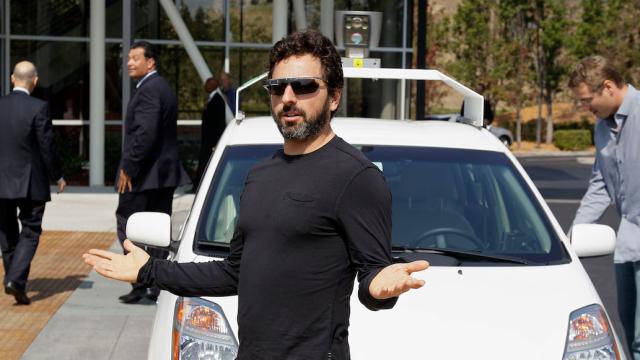We’ve all heard about how well Google’s self-driving car does on the highway. But is that so impressive? Heck, put on cruise control and an audiobook, and any car seems like it can drive itself on a freeway. The latest update from Mountain View, however, suggests that this miracle vehicle is entering a new phase of development.
In an official Google Blog post, the director of the self-driving car program, Chris Urmson, brags about some of the vehicle’s latest capabilities. Thanks to software upgrades, the self-driving car can now “detect hundreds of distinct objects simultaneously — pedestrians, buses, a stop sign held up by a crossing guard, or a cyclist making gestures that indicate a possible turn.” As these capabilities improve, Google says the car will one day be able to navigate the hectic streets of New York City with ease.
How the car pulls off these sorts of feats is a matter of some serious algorithms. The basic principle that guides the software is simple, though. The recognisable spinning silver bucket on top of the self-driving cars contains 64 lasers that collects three-dimensional information in all directions, while a radar bounces waves off every object within about 150m. There’s also a camera that looks through the windshield and reads everything from traffic signals to street signs. Meanwhile, GPS and mapping data help the car find its route and decide where to go.
Ultimately, the self-driving car software generates an image that represents all of these variables. It looks like this:
The Google car is fully rendered in red. The purple lines represent other cars on street, while red represents cyclists. Pedestrians are yellow, and street signs and signals look just like they normally do. As the software watches what all of these different players are doing at any given moment, it reacts to their movements and adjusts its driving plan accordingly. As Dmitri Dolgov from Google’s self-driving car team recently told The Atlantic Cities, “The car is capable of a lot of things, but unless it’s absolutely sure that it can handle some situation well, it will err on the conservative side.”
The Atlantic Cities has a full report of what it’s like to ride in the latest iteration of the self-driving car, and it’s pretty neat. A car reading a cyclist’s hand signals, for instance, is really cool. It’s not yet perfect, though. The self-driving car cannot hear car horns, and it cannot turn right on red. It sometimes hesitates longer than the engineers would like, but, again, this is all supposed to get better. At least, so say the Google employees showing off the technology.
When you think back to DARPA’s early self-driving car experiments a decade ago, the progress is pretty incredible. It wasn’t too long that these things were just driving into embankments. Pretty soon, it’s not going to be the technology keeping self-driving cars from bringing us closer towards fatality-free highways. It will be the legal mess. [Google, Atlantic Cities]
Picture: AP
